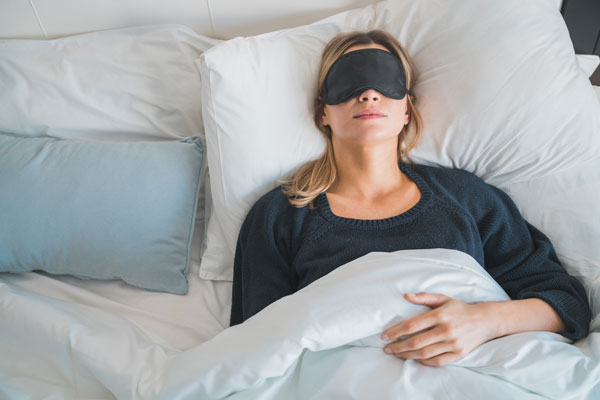If you are suffering with sleep deprivation this could be down to a disturbance to something about your daily routine. One way to gain some control over our sleep is to look at what we consume.
Both sleep and diet are complicated, which suggests that there is no single food that is guaranteed to help you get a good night’s sleep, although there are some recommendations on foods and drinks that may make it much easier to drift off.
So how do you feed a good night’s sleep? There are 3 crucial nutrients to watch out for, Melatonin, Vitamin B and Magnesium.
Melatonin is a naturally occurring hormone that is produced in the brain which assists our bodies to manage sleep. The amount that we produce and the performance of its usage is impacted by our diet. Some foods high in melatonin are nuts, in particular almonds and walnuts. If you are feeling hungry after dinner, have a handful of these as they consist of minerals like magnesium and zinc that are important to a range of bodily processes. Tart cherries are fruits that also have trytophan and anthocyanins, elements that can help the body to produce more melatonin. Milk consists of melatonin too, and proof shows that a glass of hot milk can induce a good night’s sleep.
Vitamin B also helps to control the body’s level of trytophan. This is an essential amino acid, the building block of proteins that is important for maintaining healthy sleep. Essential amino acids are a group in which our bodies can not make as they have to be sourced through diet. Some of the very best foods high in vitamin B are complex carbohydrates and whole grains, such as oatmeal, whole wheat crackers or popcorn. Chickpeas contain a good level of vitamin B, as does spinach, this leafy green vegetable is loaded with great nutrient’s for a good night’s sleep.
Magnesium is a powerful mineral that is understood to calm the nervous system and help prepare your body for sleep. A lack of magnesium has been linked to a difficulty falling and remaining asleep. Foods that are a terrific boost of magnesium include oily fish such as salmon, tuna (fresh, not tinned), sardines and mackerel. Researchers have actually reported that oily fish might aid with sleep by likewise providing a healthy dose of vitamin D and omega-3 fatty acids, these are associated with the body’s regulation of serotonin. Quinoa and wild rice are rich in magnesium, very high in nutrients and likewise simple to add to your diet plan.
Sadly, a few of your favourite foods may be disrupting your regular sleep cycle. The primary offenders to keep an eye out for are broccoli and cauliflower, although they include a lot of vitamins that are good for you, they likewise have a lot of insoluble fibre that takes a while to digest. Dark chocolate includes levels of caffeine which need to be prevented in the afternoon and night if you are struggling to sleep. Orange juice is not a good pre-bedtime beverage as it is extremely acidic and contains a lot of sugar, which can give you a rush of energy, keeping you awake. White bread and sweet baked products quickly break down into sugar, entering the bloodstream and providing you a boost which can prevent sleep.
Whilst nutritionist’s advise consuming and avoiding specific foods to promote healthy sleep, they are less likely to be efficient if you have a bad bedtime regimen. This could be an incorrect temperature in your bedroom, too much sound or brightness, or if you go to sleep watching tv or listening to music. Any of these can suppress your body melatonin production and combat the benefits of sleep-promoting food. Reviewing your present sleep practices may assist you to sleep better.
It can take up to 4 hours to fully digest a meal, so going to sleep straight after a big meal can cause indigestion or heartburn. Making certain you give yourself time to wind down for bed is an excellent practice to keep, together with a consistent sleeping pattern.
Physical activity is also excellent for sleep, as well as your basic health. Tiring yourself out throughout the day means you are ready for 8 hours by the evening, and can absorb your food better. Weight reduction is accelerated by sleeping, and sleeping offers you the energy to workout, so entering into a good habit of doing both can act as a catalyst to your overall wellness.
If you are interested in Health & Wellbeing information, you may also be interested in Medical, Health and Education Ltd, mhe.ltd. MHE Ltd provide support, training and information on everything from PCR Testing, Drug and Alcohol Testing, Policy Development to health and wellness, including nutrition and cancer prevention information.



